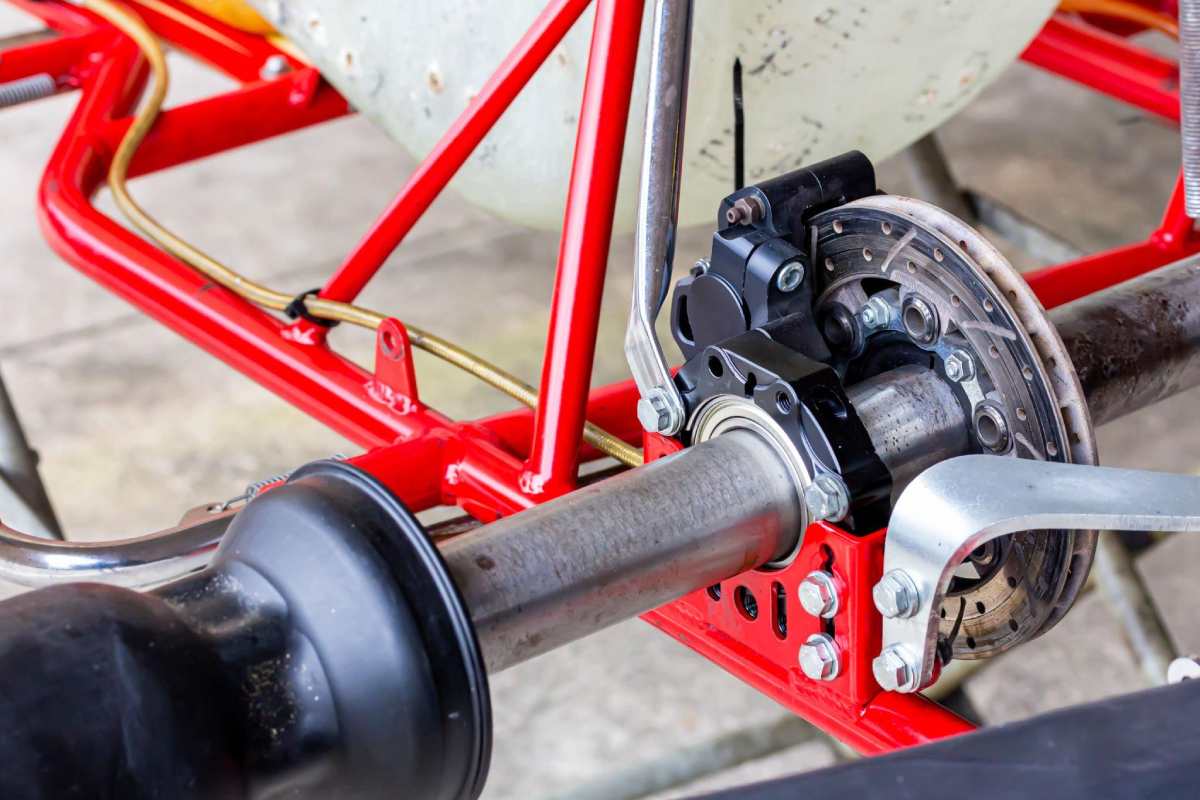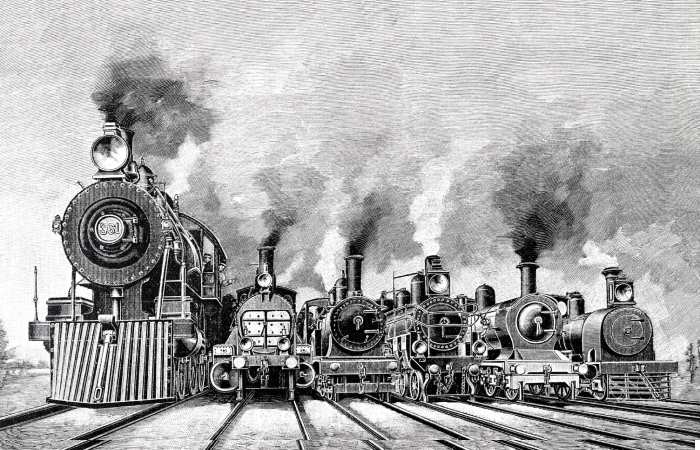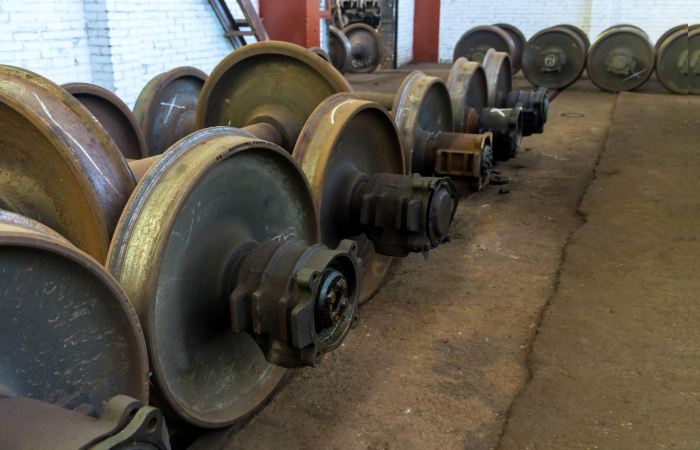An engine or locomotive is a rail transport car that provides the train with its motive power. If a locomotive able enough to carry a payload, it often referred to by various terms, such as wagon, motor car, or coach.
What is a locomotive for?
Conventionally, locomotives used to haul trains down the track from the front. However, the concept of push-pull is very broad, in that at the front, at each end, or at the rear, the train can have a locomotive as needed. Moreover, recently, railways have started to adopt distributor power, or DPUs.
What is the difference amid a train and a locomotive?
Locomotives usually perform certain functions like:-
- The locomotive that attached to the front of a train to pull it called a locomotive.
- Station Pilot – The locomotive deployed at a railway station to change passenger trains.
- Pilot engine – The locomotive connected to the train engine at the front, to facilitate double running.
- Bank Engine – The locomotive attached to the back of a train engine; this is possible through a strong shock or start.
Locomotives used in various rail transport operations, such as: hauling passenger trains, shunting and freight trains.
The wheel configuration of a locomotive represents the number of wheels it has; popular techniques include UIC classification, Whyte notation systems, AAR wheel arrangement, etc.
Difference Between Freight and Passenger Locomotives
The most obvious distinction is in the shape and size of the locomotive body. Because passenger trains travel faster than other trains, air resistance plays a more important role than is the case with freight units. Most passenger locomotives usually have a cowl running the length of the body; this may be for cosmetic reasons.
On the other hand, freight units tend to have more reason to stop when the conductor has to get on and off the locomotive, and are more likely to move backwards, so they have a thin canopy around the actual powerhouse. This provides better visibility when driving backwards, and provides space to have stairs instead of ladders, making it much more comfortable for staff who have to get on and off the locomotive frequently.
Also Read: Are Finance And Accounting The Same
CV axles supposed to have play
Freight locomotives built for more torque (a twisting force) and passenger locomotives built for more speed. A normal freight locomotive engine yields between 4,000 and 18,000 horsepower.
The gearing of passenger locomotives also differs from that of freight locomotives in that its ratio is smaller, so the traction motor turns fewer times for each rotation of the wheel.
Passenger engines typically require higher top speeds, while freight engines need higher starting tractive forces because they launch heavier trains. This results in various gear ratios (which, on electric and diesel-electric motors, does not have numerous gears).
History of the invention of the locomotive
The long history of rail transport began in ancient times. The history of locomotives and rails can classified into several discrete intervals distinguished primarily by the materials from which the roads or tracks were built, and by the motive power used.
CV axles supposed to have play
200 years of train locomotive technology
Railroad push technology has seen an explosion of invention in the previous two centuries.
Cornish engineer Richard Trevithick racked his brains and educated the world about the creation of the railway in the Welsh mining village twenty decades ago. The introduction of the railway transformed the dynamics of people through the process throughout the world.
Using the example of the first operational railway steam locomotive, Trevithick standardized the haulage survey; the Industrial Revolution spurred the outbreak of the transportation uprising, which was intensified and facilitated throughout the 20th century by modern energy sources and a growing concern for environmental performance and productivity.
From the rudimentary steam engines produced during the 19th century to notions of progressive momentum (the process of pulling and pushing to make an object move forward) that have yet to fully inspected, here we take a walk down memory lane through of the past, the current and expected fate of advances in locomotive technology.
Only in 2004 was Richard’s effort widely recognized, two hundred years after his influential introduction, by the Royal Mint, which put into circulation a commemorative £2 coin bearing Trevithick’s name and innovation.
Moreover, in 1804: Richard Trevithick gives the world the gift of the age of steam power
In 1804: Richard Trevithick gives the world the gift of the age of steam power
In 1804, a British mining engineer, explorer and inventor, Richard Trevithick, prior to his great railway revolution, had long investigated steam engines using high pressure, with mixed results; from the triumphal presentation of the steam road locomotive in 1802, called the “Puffing Devil”, to the catastrophe of 1803, in Greenwich, when there were four victims due to an explosion of one of its stationary pumping machines. However, his opponents used this unfortunate event to ridicule the dangers of high-pressure steam.
However, Trevithick’s hard work paid off and his ‘Penydarren locomotive’ rose to prominence through innovations in locomotive technology, eventually becoming the first properly functioning steam locomotive on the railways.
Railroad electrification – 1879
At the end of the 19th century, Germany was the nucleus of the growth of electric locomotives. Werner von Siemens demonstrated the first electric passenger train in tests. He was the creator and father of the vast engineering organization Siemens AG. The locomotive, which cemented the notion of the isolated third rail for electricity, carried a total of ninety thousand passengers.
Are cv axles supposed to have play
Siemens assembled the world’s first electric tramway line in 1881, in the Berlin suburb of Lichterfelde, and laid the foundations for similar locomotives on the Mödling & Hinterbrühl tramway in Vienna and the Volk electric railway. , in Brighton, both opened in 1883.
The demand for environmentally friendly rails in subways and subways spurred the innovation of electric trains. After a few years, improved efficiency and ease of construction led to the start of CA.
The Hungarian engineer Kálmán Kandó played an important role in the evolution of longer-distance electrified lines, such as the 16-kilometre Valtellina railway in Italy.
Today, electric locomotives continue to play an vital role in the rail arena through high-speed aids such as the Acela Express and the French TGV in the United States. However, the enormous expense involved in the electrification of the lines to take advantage of electric locomotives, such as the catenary or the third rail, continues to be an obstacle and an impediment to the extensive application of the aforementioned technology.
Are cv axles supposed to have play
Diesel isation procedure (!) 1892 – 1945
Dr. Rudolf Diesel’s royal copyright in 1892 on his diesel engine prompted presumptions about how this current internal combustion technique could perhaps also power railways. However, this took many years, as the advantages of diesel can properly understood in railway locomotives.
In the late 19th and early 20th periods, the locomotive industry experienced continued development and growth thanks to more efficient diesel engines with a higher power-to-weight ratio.
CV axles supposed to have play
Many of them arose at Sulzer, a Swiss engineering firm where Diesel worked for a long time—it made diesel the zenith for building steam locomotives made almost obsolete by the growing possibility of World War II. By 1945, steam locomotion had become extremely rare in advanced and also progressive nations, and by the late 1960s, it had become a rare beast.
Diesel locomotives offered multiple apparent functional advantages, including multi-locomotive operations, accessibility to remote locations realized without the need for electrification in difficult areas such as mountains and forests, cheap livelihood, slow waiting time , a less intensive work procedure and adequate thermal efficiency.
Also Read: The Importance Of Hiring a Hispanic Lawyer in the US



